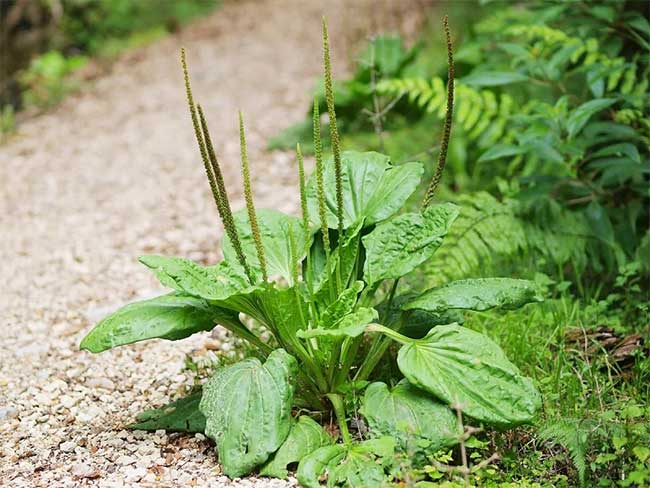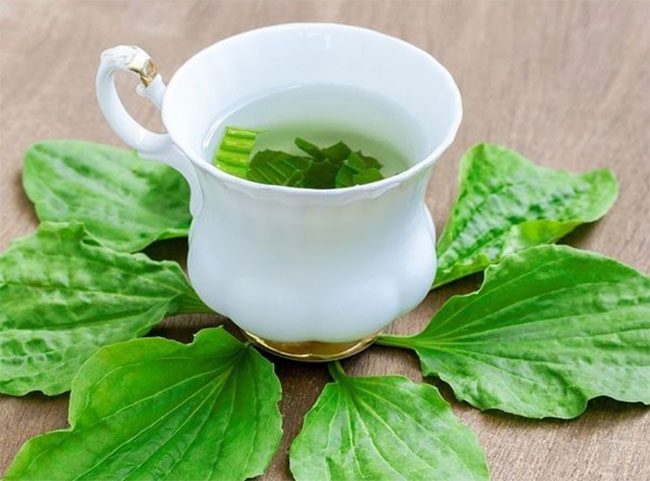In rural vegetable fields, various types of plants and grasses often grow intermixed. Many species are quite vigorous, sometimes developing into distinct areas. Among them is a plant that resembles grass, identifiable by its prominent characteristics, with a height of about a hand’s breadth.
Many young people may not recognize it and often pull it out, but older individuals, especially those with years of experience, recognize it and refer to it as “kidney grass.” Why is that?
The Plant Often Called “Kidney Grass”
In fact, this plant is not officially named “kidney grass.” Its correct name is Plantago asiatica, also commonly known as “astragalus herb”. This is a perennial herbaceous plant known for its remarkable regenerative capabilities, especially through branching and sometimes by seeds. The plant typically grows to a height of about 10 to 15 cm.
This plant is easy to cultivate, with origins traced back to Europe and certain regions of Asia. It usually produces greenish flowers and has large, oval leaves. Plantago asiatica can be consumed raw or cooked, and is utilized in traditional Chinese medicine for various therapeutic purposes.

Plantago asiatica growing naturally, thriving in moist environments.
Plantago asiatica has a sweet taste and a cooling nature; whether the seeds, roots, or leaves, it has medicinal properties, such as treating urinary issues, chronic coughs, bronchitis, cholera, dysentery, and various other ailments.
Where Does Plantago asiatica Typically Grow?
Plantago asiatica grows naturally and does not thrive in dry environments but rather prefers moist conditions. Generally, suitable terrains for the growth and reproduction of this plant are cool, humid forest areas.
Additionally, this species is often found in riverbanks, agricultural lands, and vegetable fields.
Plantago asiatica can also be cultivated, but it is essential to ensure the soil is fertile to allow for proper root development and growth.
This plant prefers humidity and requires watering every 3 to 5 days, with a frequency that should not be too low. Temperature is also a critical factor, ideally maintained between 20-24 degrees Celsius for optimal growth. When the environmental temperature exceeds 35 degrees Celsius, the growth rate of the plant slows significantly.
What Benefits Does Plantago asiatica Offer That Many People Appreciate?
The leaves of Plantago asiatica are rich in calcium and contain a variety of other minerals. In just 100g of leaves, there is a vitamin A content comparable to that found in carrots.
The entire plant contains a glucoside known as aucubin. The leaves have mucilage, bitter compounds, and vitamins C and K, as well as T factor. The seeds contain mucilage and plantenolic acid.
Due to these components, Plantago asiatica has become a common herbal remedy in folk medicine and traditional Chinese medicine, offering numerous health benefits, such as:
- Diuretic properties, enhancing the elimination of salt, uric acid, and urea from the body
- Antibacterial effects
- Cough relief and phlegm reduction
- Increasing bronchial mucus secretion, inhibiting respiratory centers to facilitate deeper, slower breathing due to the active ingredient plantagin
- Plantago seeds are rich in polysaccharides that absorb water and help with bowel movements
- Support for hypertension treatment
- Lung detoxification and aiding in smoking cessation…

The leaves of Plantago asiatica contain several anti-inflammatory compounds.
Additionally, other benefits include:
Reducing Inflammation
The leaves of Plantago asiatica contain anti-inflammatory compounds, including flavonoids, terpenoids, glycosides, and tannins, making this plant helpful in reducing some signs of inflammation due to liver damage. As a result, it helps mitigate chronic inflammation, which can lead to various other diseases.
Promoting Wound Healing
By reducing inflammation, Plantago asiatica can also hinder bacterial growth and alleviate pain, thus supporting wound healing. Studies show that a combination of aloe vera gel and Plantago asiatica can effectively heal foot ulcers.
Supporting Digestive Health
Some compounds in the seeds and leaves of Plantago asiatica have been shown to alleviate various digestive issues. The seeds contain psyllium, a type of fiber commonly used as a natural laxative because it absorbs water as it moves through the digestive tract. The leaves can also slow down digestive transit, promoting regular bowel movements and helping treat diarrhea.
Moreover, Plantago asiatica supports digestive issues like inflammatory bowel disease (IBD), which can cause symptoms like stomach pain, bloating, and diarrhea.

Avoid using Plantago asiatica too frequently or for thirst quenching.
Things to Note When Using Plantago asiatica
Some individuals may experience allergic reactions or anaphylaxis when using Plantago asiatica, with symptoms such as nausea, vomiting, diarrhea, bloating, and skin reactions. More dangerously, this can pose life-threatening risks.
It is crucial not to use Plantago asiatica too frequently or for thirst-quenching purposes because it has strong diuretic effects. Therefore, it is advisable to limit the consumption of Plantago asiatica water in the evening to avoid frequent urination at night.
Pregnant women, especially in the first trimester, are advised by experts not to use Plantago asiatica water, as it may lead to miscarriage.
Absolutely avoid using Plantago asiatica water for individuals with weak kidneys or chronic kidney failure.


















































